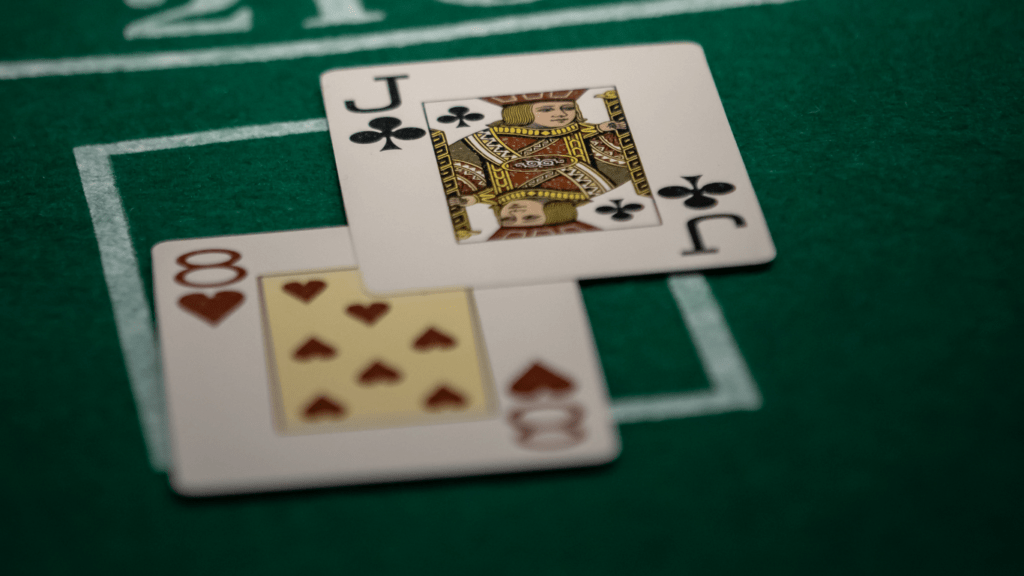Understanding Card Counting
Card counting, a strategy in blackjack, revolves around tracking cards to determine the likelihood of advantageous hands. It’s not about memorizing each card but assessing the deck’s composition.
How Card Counting Works
Card counting works by assigning point values to different cards. High cards like 10s and Aces receive negative points, while low cards like 2s through 6s get positive points. Players monitor these values to adjust bets and decisions, gaining an edge when the count indicates a higher chance of getting a blackjack.
Common Myths About Card Counting
Several myths surround card counting. One myth is that it guarantees wins, which isn’t true because casino rules and unpredictable hands affect outcomes. Another misconception suggests it’s illegal; while frowned upon by casinos, it’s not against the law. Some also believe it’s only for math experts, but simple systems like the Hi-Lo method simplify the process.
The Reality of Card Counting

Card counting, a strategic tool in blackjack, offers both benefits and challenges. It’s vital to examine its practicality to understand its impact in real-world scenarios.
Pros and Cons of Card Counting
- Card counting can provide a significant mathematical advantage in blackjack, increasing a player’s probability of winning.
- By keeping track of high and low cards dealt, I can adjust my bets accordingly to maximize potential gains.
- This approach doesn’t require memorizing every card, making it more accessible.
- However, this strategy has its drawbacks.
- Casinos actively work against card counters, implementing measures like shuffling decks frequently to diminish the player’s edge.
- This constant adjustment requires vigilance and can be mentally taxing.
- Card counting remains ineffective in online blackjack due to random number generators and multiple deck usage.
Legal Implications
Card counting isn’t illegal; it’s a legal strategy, although casinos discourage it. If detected, I might face consequences such as being asked to leave the property. Casinos reserve the right to ban players even if they don’t break any laws. While card counting doesn’t involve illegal actions, understanding casino policies is crucial for anyone attempting to employ this technique. Knowing the distinction between legal strategy and casino policy helps navigate potential challenges effectively.
Famous Card Counting Techniques
Card counting in blackjack is a method employed to gain an edge over the house. For those delving into this strategy, understanding the various techniques becomes crucial.
Hi-Lo Strategy
The Hi-Lo strategy remains the most widely recognized card counting method. It’s centered on assigning point values to cards to maintain a running count. Cards 2-6 receive +1, 7-9 are neutral, and 10 through Aces carry -1. By tracking the count, players adjust bets according to the probability of favorable hands. This method’s simplicity and effectiveness have made it a staple in card counting, allowing players at all levels to attempt gaining an edge.
Other Popular Methods
Several other strategies exist for those seeking alternatives to Hi-Lo.
- The Zen Count involves a more complex system, assigning varying values between -2 and +2 to enhance precision.
- The Omega II technique uses a balanced approach, where all card values even out to zero at the end of a full deck.
- Advanced counters might explore the Wong Halves method, which divides values into fractions for refined accuracy.
Each method offers potential benefits and unique challenges, requiring players to choose based on their proficiency and commitment.
Card Counting in Popular Culture
Card counting has captured the imagination of filmmakers and creators, embedding itself in popular culture. Its portrayal often glamorizes the strategy but can mislead audiences about its true nature.
Movies and Documentaries
Movies and documentaries frequently depict card counting as an ingenious strategy to beat the casinos. Films like “21” and “Rain Man” illustrate characters leveraging this technique to win significant sums, albeit with dramatic flair and sometimes unrealistic scenarios.
Documentaries such as “Breaking Vegas” offer a more factual exploration, focusing on real-life card counters like the MIT Blackjack Team, who used mathematics to gain an edge over the house. These portrayals, while entertaining, can exaggerate the ease and excitement of card counting, often neglecting the associated challenges and necessary skill.
Impact on Casino Policies
The popularity of card counting in media has influenced casino procedures. Casinos have implemented measures like continuous shuffling machines and increased deck numbers in response to its notoriety, making card counting more difficult.
Security teams are trained to spot counters, using surveillance and betting pattern analysis to identify potential threats. While card counting remains legal, these policies aim to deter its practice, showcasing the impact of its cultural representation on actual gaming environments.
Tips for Aspiring Card Counters
Aspiring card counters can benefit from honing their skills and understanding key strategies. The journey requires commitment and strategic forethought.
Practice and Patience
Practice ensures proficiency in card counting skills. Regularly count decks to improve speed and accuracy. Patience plays a pivotal role while mastering methods like the Hi-Lo system. Simulate actual casino conditions using software or home setups to mimic real game pace. These simulations help refine decision-making under pressure. Track progress by gradually reducing the time it takes to count a deck correctly.
Avoiding Detection
While card counting isn’t illegal, casinos discourage it and can ban players if they’re suspected. Keep your bet adjustments minimal to avoid drawing attention. Vary betting patterns subtly while maintaining accuracy to blend in. Develop a calm demeanor and maintain consistent actions to avoid security scrutiny. It’s essential to stay aware of surveillance and betting pattern analysis tools used by casinos.



